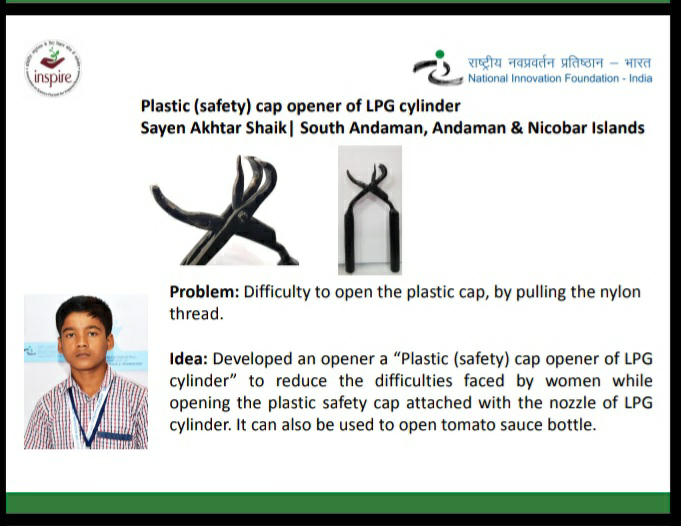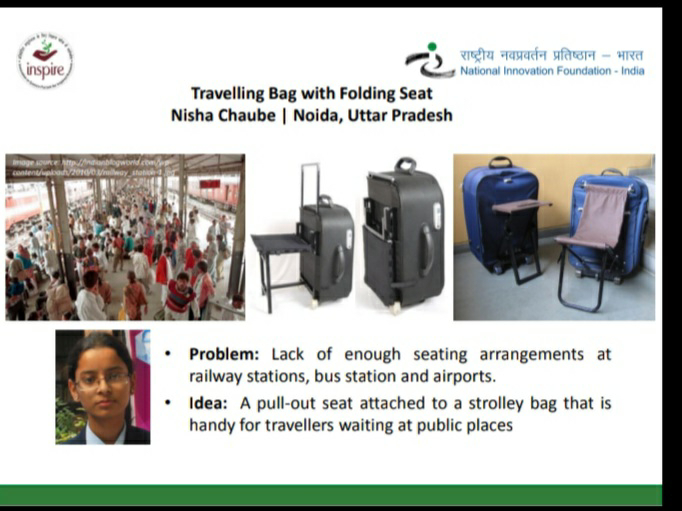04.Angles and Pairs of Angles
TextBook Page No 25:
Question 1:
Observe the figure and complete the table for ∠AWB..png)
| Points in the interior | |
| Points in the exterior | |
| Points on the arms of the angles |
ANSWER:
| Points in the interior | R, C, N, X |
| Points in the exterior | T, U, Q, V, Y |
| Points on the arms of the angles | A, W, G, B |
Page No 25:
Question 2:
Name the pairs of adjacent angles in the figures below..png)
ANSWER:
Two angles which have a common vertex, a common arm and separate interiors are said to be adjacent angles.
The pairs of adjacent angles are given below:
∠ANB and ∠BNC,
∠BNC and ∠ANC,
∠ANC and ∠ANB,
∠PQR and ∠PQT
Page No 25:
Question 3:
.png)
ANSWER:
Two angles which have a common vertex, a common arm and separate interiors are said to be adjacent angles
(i)
In ∠PMQ and ∠RMQ, M is the common vertex and MQ is the common arm.
Therefore, ∠PMQ and ∠RMQ are adjacent angles.
(ii)
The angles ∠RMQ and ∠SMR have a common vertex M, but don't have common arm.
Therefore, ∠RMQ and ∠SMR are not adjacent angles.
(iii)
The angles ∠RMS and ∠RMT have a common vertex M, but don't have common arm.
Therefore, ∠RMS and ∠RMT are not adjacent angles.
(iv)
In ∠SMT and ∠RMS, M is the common vertex and SM is the common arm.
Therefore, ∠SMT and ∠RMS are adjacent angles.
Page No 26:
Question 1:
ANSWER:
(i)
Let the measure of the complementary angle be a.
40 + a = 90
∴ a = 50°
Hence, the measure of the complement of an angle of measure 40° is 50°
(ii)
Let the measure of the complementary angle be a.
63 + a = 90
∴ a = 27°
Hence, the measure of the complement of an angle of measure 63° is 27°
(iii)
Let the measure of the complementary angle be a.
45 + a = 90
∴ a = 45°
Hence, the measure of the complement of an angle of measure 45° is 45°
(iv)
Let the measure of the complementary angle be a.
55 + a = 90
∴ a = 35°
Hence, the measure of the complement of an angle of measure 55° is 35°
(v)
Let the measure of the complementary angle be a.
20 + a = 90
∴ a = 70°
Hence, the measure of the complement of an angle of measure 20° is 70°
(vi)
Let the measure of the complementary angle be a.
90 + a = 90
∴ a = 0°
Hence, the measure of the complement of an angle of measure 00° is 0°
(vii)
Let the measure of the complementary angle be a.
x + a = 90
∴ a = (90 − x)°
Hence, the measure of the complement of an angle of measure x° is (90 − x)°
Page No 26:
Question 2:
(y 20)° and (y + 30)° are the measures of complementary angles. Find the measure of each angle.
ANSWER:
Sum of two complementary angles is 90°
∴ (y 20)° + (y + 30)° = 90°
⇒ y 20 + y + 30 = 90
⇒ 2y + 10 = 90
⇒ 2y = 80
⇒ y = 40
substitute the value of Y
y - 20
= 40 - 20
= 20
------------
y + 30
40 + 30
= 70
Hence, the measure of the two angles are 20° and 70°.
Page No 27:
Question 1:
ANSWER:
(i)
Let the measure of the supplementary angle be a.
15 + a = 180
∴ a = 165°
Hence, the measure of the supplement of an angle of measure 15° is 165°.
(ii)
Let the measure of the supplementary angle be a.
85 + a = 180
∴ a = 95°
Hence, the measure of the supplement of an angle of measure 85° is 95°.
(iii)
Let the measure of the supplementary angle be a.
120 + a = 180
∴ a = 60°
Hence, the measure of the supplement of an angle of measure 120° is 60°.
(iv)
Let the measure of the supplementary angle be a.
37 + a = 180
∴ a = 143°
Hence, the measure of the supplement of an angle of measure 37° is 143°.
(v)
Let the measure of the supplementary angle be a.
108 + a = 180
∴ a = 72°
Hence, the measure of the supplement of an angle of measure 108° is 72°.
(vi)
Let the measure of the supplementary angle be a.
0 + a = 180
∴ a = 180°
Hence, the measure of the supplement of an angle of measure 0° is 180°.
(vii)
Let the measure of the supplementary angle be x.
a + x = 180
∴ x = (180 − a)°
Hence, the measure of the supplement of an angle of measure a° is (180 − a)°.
Page No 27:
Question 2:
m∠D = 75° m∠E = 0° m∠F = 15° m∠G = 120°
ANSWER:
If the sum of the measures of two angles is 90° they are known as complementary angles.
Hence,the pairs of complementary angles are ∠B and ∠N, ∠D and ∠F, ∠Y and ∠E.
If the sum of the measures of two angles is 180° they are known as supplementary angles.
Hence, the pairs of supplementary angles are ∠B and ∠G, ∠N and ∠J.
Page No 27:
Question 3:
In ∆XYZ, m∠Y = 90°. What kind of a pair do ∠X and ∠Z make?
ANSWER:
In ∆XYZ,
∠X + ∠Y + ∠Z = 180° (Angle Sum property of triangle
⇒ ∠X + 90° + ∠Z = 180°
⇒ ∠X + ∠Z = 90°
Since, the sum of the measure of the two angles is 90°.
Hence, ∠X and ∠Z are complementary angles.
Page No 27:
Question 4:
ANSWER:
Let the measure of the first angle a.
Then, the measure of the other angle a + 40°
Now, a + a + 40 = 90
⇒ 2a = 50
⇒ a = 25°
Hence, the measure of the two angles are 25° and 65°.
Page No 27:
Question 5:
PTNM is a rectangle. Write the names of the pairs of supplementary angles.
ANSWER:
If the sum of the measures of two angles is 180° they are known as supplementary angles.
The measure of all the angles of a rectangle is 90°.
Hence, the pairs of supplementary angles are ∠P and ∠M, ∠T and ∠N, ∠P and ∠T, ∠M and ∠N, ∠P and ∠N, ∠M and ∠T.
Page No 27:
Question 6:
ANSWER:
Let the measure of the complementary angle be a.
70 + a = 90
∴ a = 20°
Let the measure of the supplementary angle of 20° be x.
20 + x = 180
∴ x = 160°
Hence, the measure of the supplement of the complement of ∠A is 160°.
Page No 27:
Question 7:
ANSWER:
Let the measure of the supplementary angle of ∠B be a.
(x + 20)° + a = 180
∴ a = (160 − x)°
Hence, the measure of ∠A is (160 − x)°.
Page No 28:
Question 1:
ANSWER:
Two rays which have a common origin and form a straight line are said to be opposite rays.
Hence, the pairs of opposite rays are ray PL & ray PM and ray PN & ray PT.
Page No 28:
Question 2:
Are the ray PM and PT opposite rays? Give reasons for your answer..png)
ANSWER:
Ray PM and PT are not opposite rays because they do not form a straight line.
Page No 29:
Question 1:
ANSWER:

(ii)
The sum of the measures of the angles in a linear pair is 180°.
Therefore, angles in a linear pair are always supplementary.
(iii)

(iv)

(v)

(vi)
If the sum of the measures of two angles is 180° they are known as supplementary angles.
The sum of the measures of the angles in a linear pair is 180°.
Therefore, angles in a linear pair are always supplementary.
Page No 30:
Question 1:

ANSWER:
In the given figure,
∠DPA + ∠APB = 180∘ (Linear Pair angles)
⇒ 47∘ + ∠APB = 180∘
⇒ ∠APB = 133∘
Now,
∠APD = ∠BPC = 47∘ (Vertically opposite angles)
∠APB = ∠DPC = 133∘ (Vertically opposite angles)
Hence, the measures of ∠APB, ∠BPC, ∠CPD are 133∘, 47∘ and 133∘ respectively.
Page No 30:
Question 2:
Lines PQ and RS intersect at point M. m∠PMR = x° What are the measures of ∠PMS, ∠SMQ and ∠QMR?
ANSWER:
In the given figure,
∠RMP + ∠PMS = 180∘ (Linear Pair angles)
⇒ x∘ + ∠PMS = 180∘
⇒ ∠PMS = (180 − x)∘
Now,
∠PMR = ∠SMQ = x∘ (Vertically opposite angles)
∠PMS = ∠RMQ = (180 − x)∘ (Vertically opposite angles)
Hence, the measures of ∠PMS, ∠SMQ and ∠QMR are (180 − x)∘, x∘ and (180 − x)∘ respectively.
Page No 33:
Question 1:
∠ACD is an exterior angle of ABC.The measures of ∠A and ∠B are equal. If m∠ACD = 140°, find the measures of the angles ∠A and ∠B.
ANSWER:
∠A + ∠B = ∠ACD (Exterior angle property)
⇒ 2∠A = 140∘ (∵∠A = ∠B)
⇒ ∠A = 70∘
Hence, the measures of ∠A and ∠B are 70∘ and 70∘ respectively.
Page No 33:
Question 2:
Using the measures of the angles given in the figure alongside, find the measures of the remaining three angles.
ANSWER:
In the given figure,
∠BOC = ∠FOE = 4y (Vertically opposite angles)
∠EOD = ∠AOB = 8y (Vertically opposite angles)
∠AOF = ∠COD = 6y (Vertically opposite angles)
Now, ∠AOB + ∠BOC + ∠COD = 180∘ (Linear Pair angles)
⇒ 8y + 4y + 6y = 180∘
⇒ 18y = 180∘
⇒ y = 10∘
Therefore,
∠BOC = 4y
= 40∘
∠EOD = 8y
= 80∘
∠AOF = 6y
= 60∘
Hence, the measures of ∠BOC, ∠EOD, ∠AOF are 40∘, 80∘ and 80∘ respectively.
Page No 33:
Question 3:
(3x17)° and (8x + 10)° respectively. Find the measures of ∠ACB and ∠ACD. Also find the measures of ∠A and ∠B.
ANSWER:
Given:
∠ACB = (3x 17)∘
∠ACD = (8x + 10)∘
Now, ∠ACB + ∠ACD = 180∘ (Linear Pair angles)
⇒ 3x − 17 + 8x + 10 = 180
⇒ 11x = 187
⇒ x = 17
Therefore,
∠ACB = (3x = (51 = 34∘
∠ACD = (8x + 10)∘
= (136 + 10)∘
= 146∘
Now, ∠A + ∠B = ∠ACD (Exterior angle property)
⇒ 2∠A = 146∘ (∵∠A = ∠B)
⇒ ∠A = 73∘
Hence, the measures of ∠ACB, ∠ACD, ∠A and ∠B are 146∘, 34∘, 73∘ and 73∘ respectively.






















.png)
.png)



